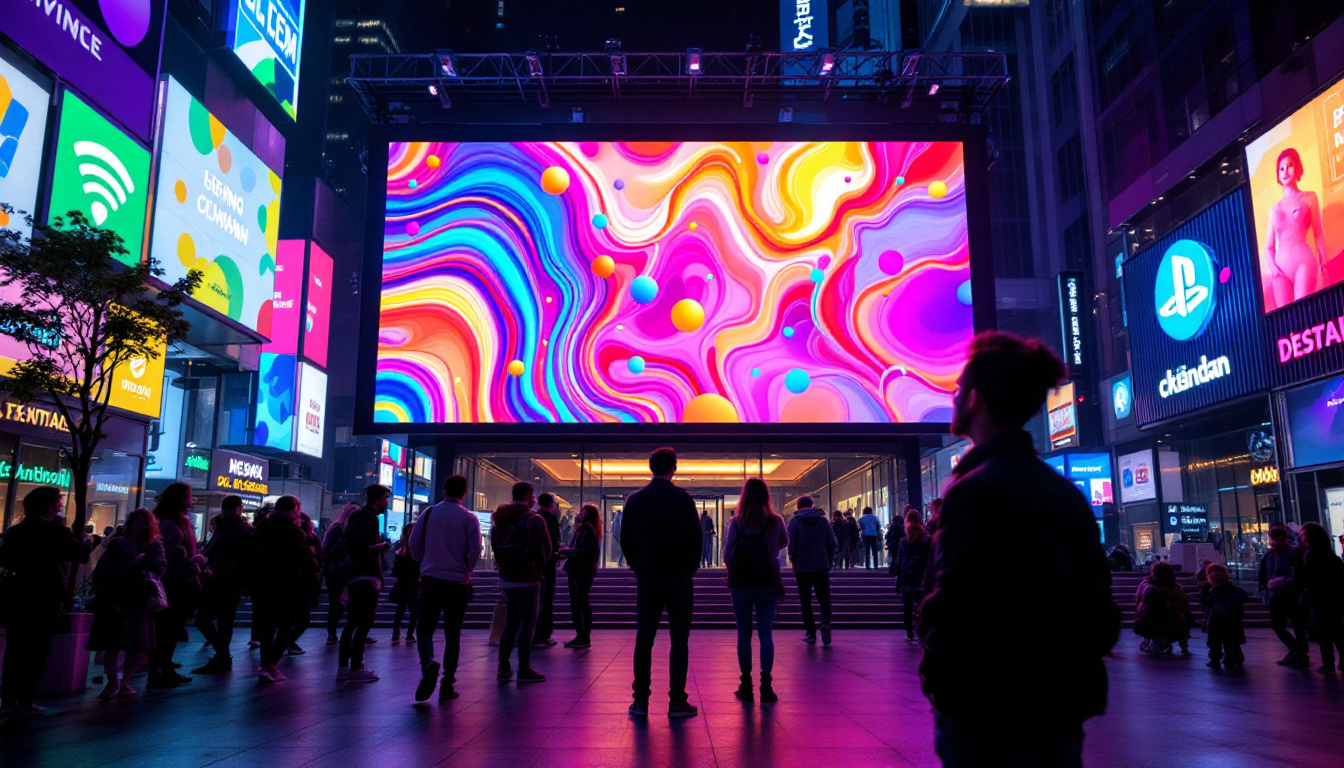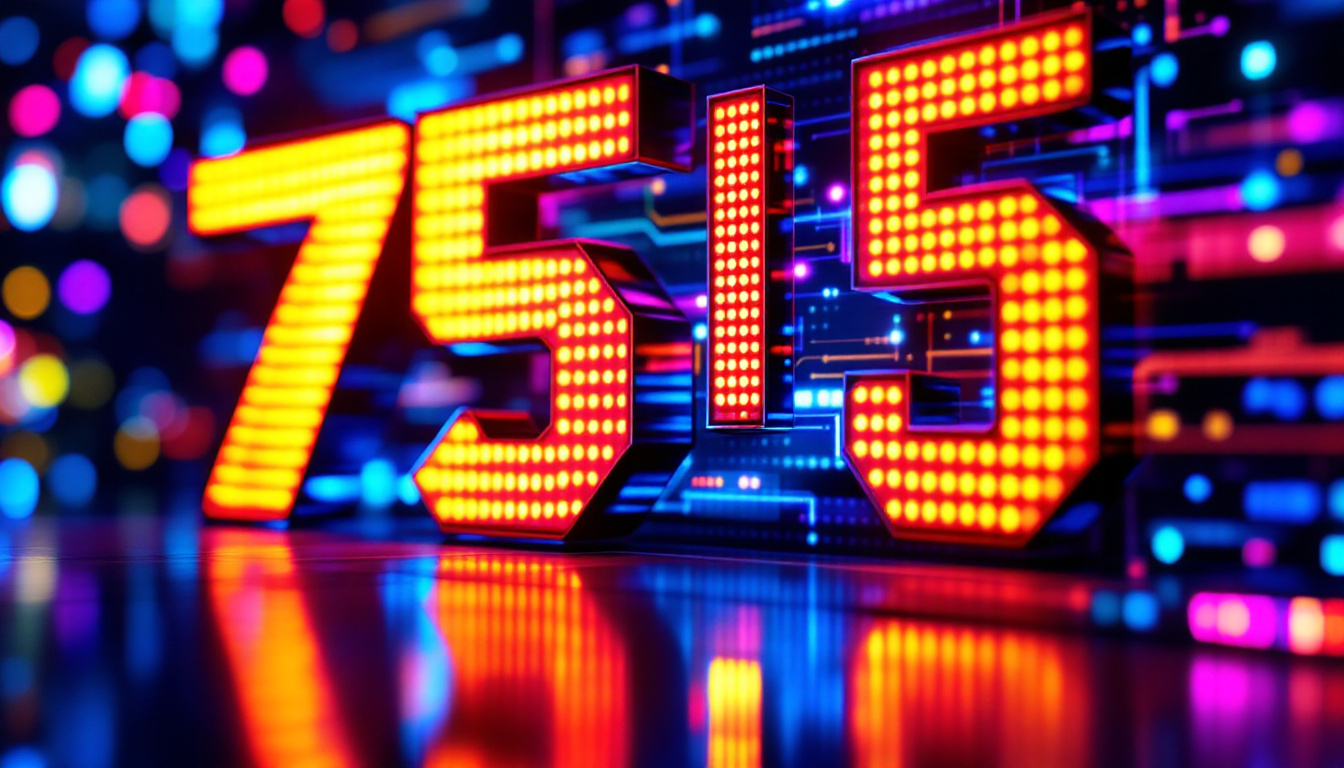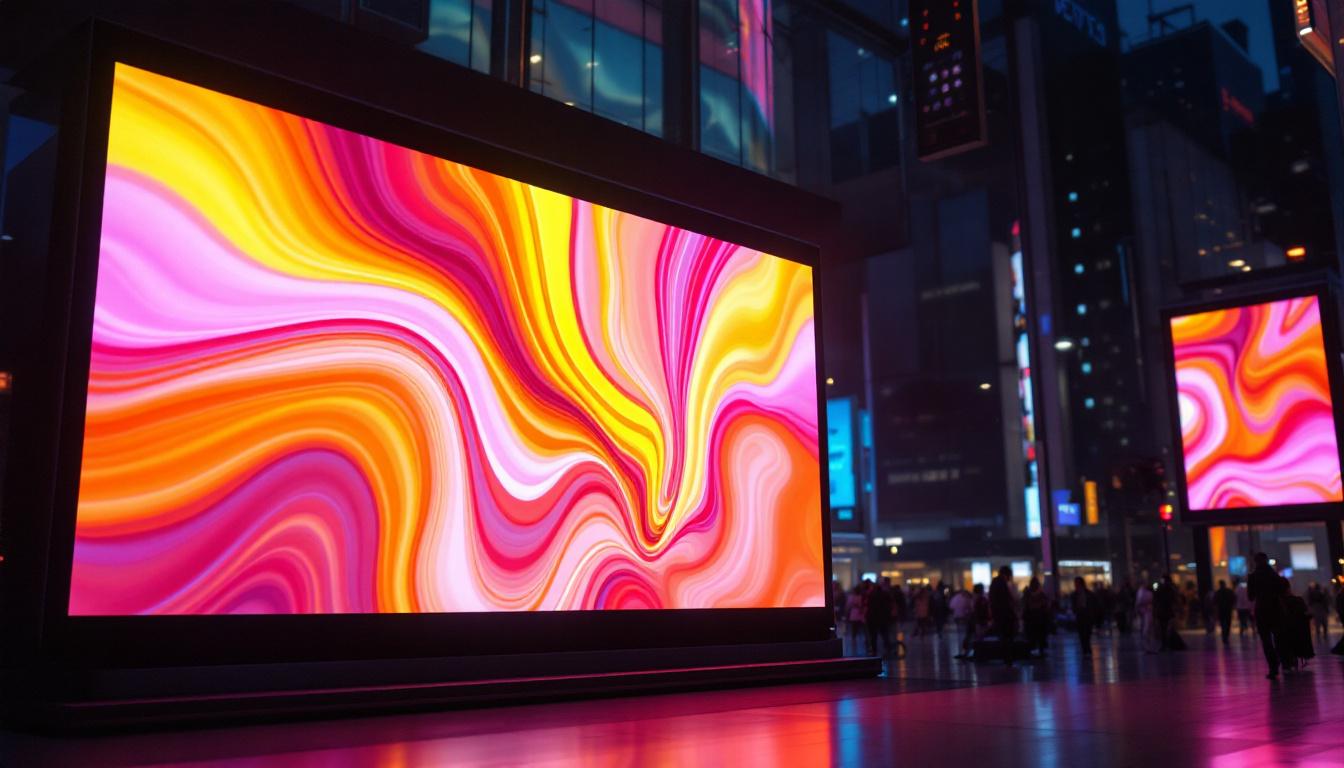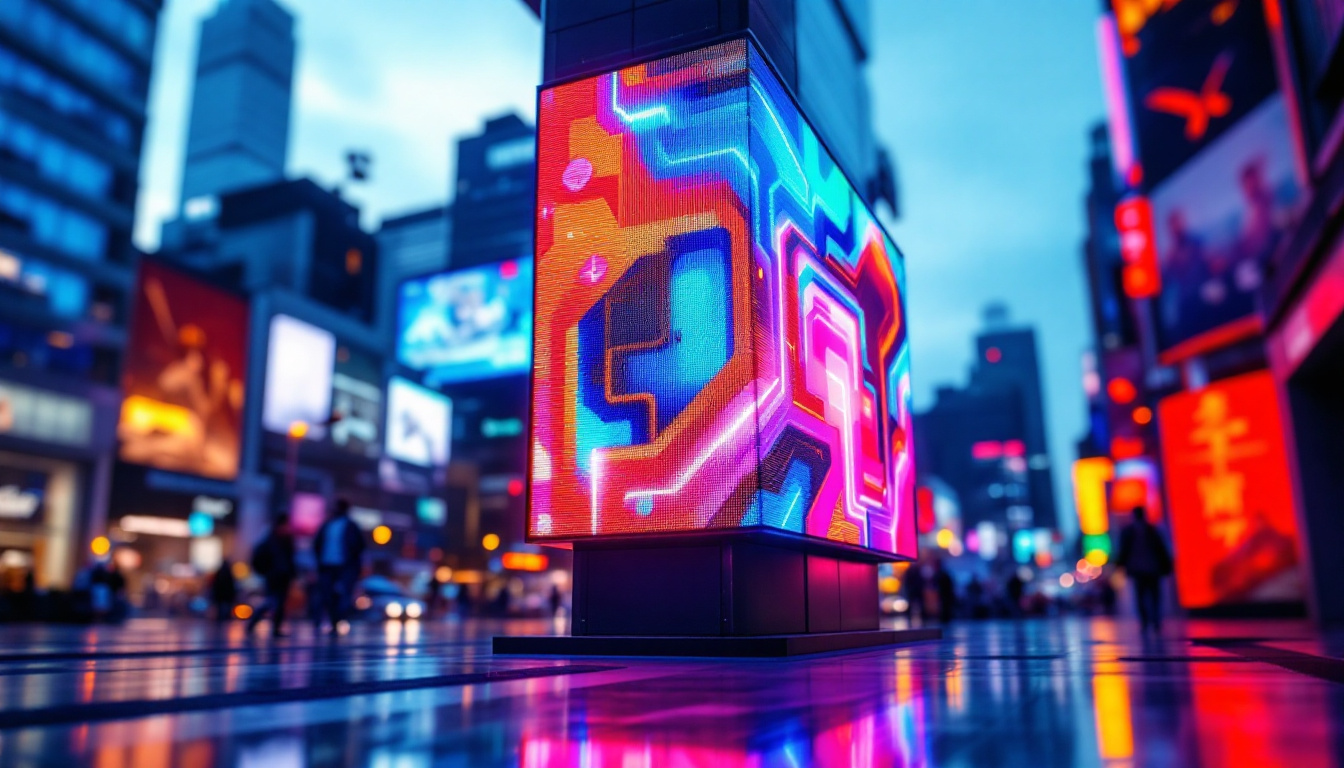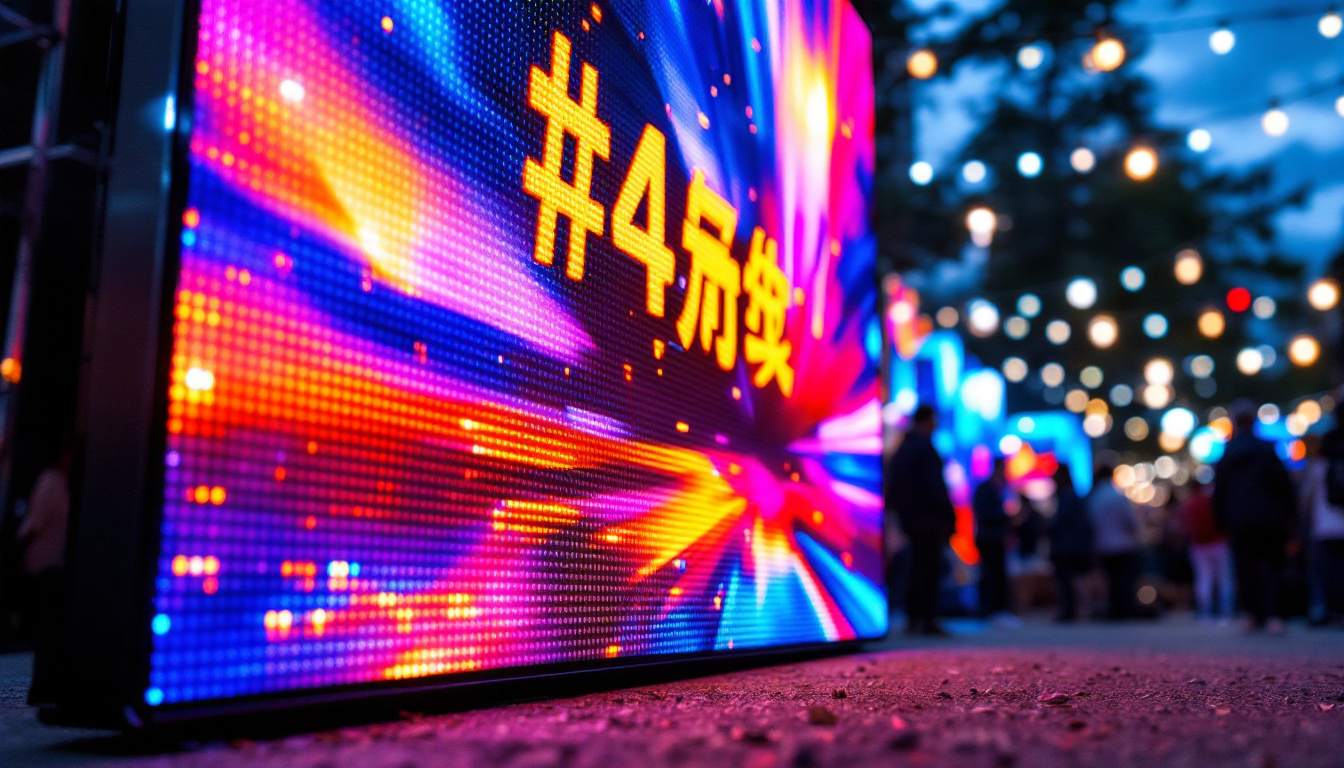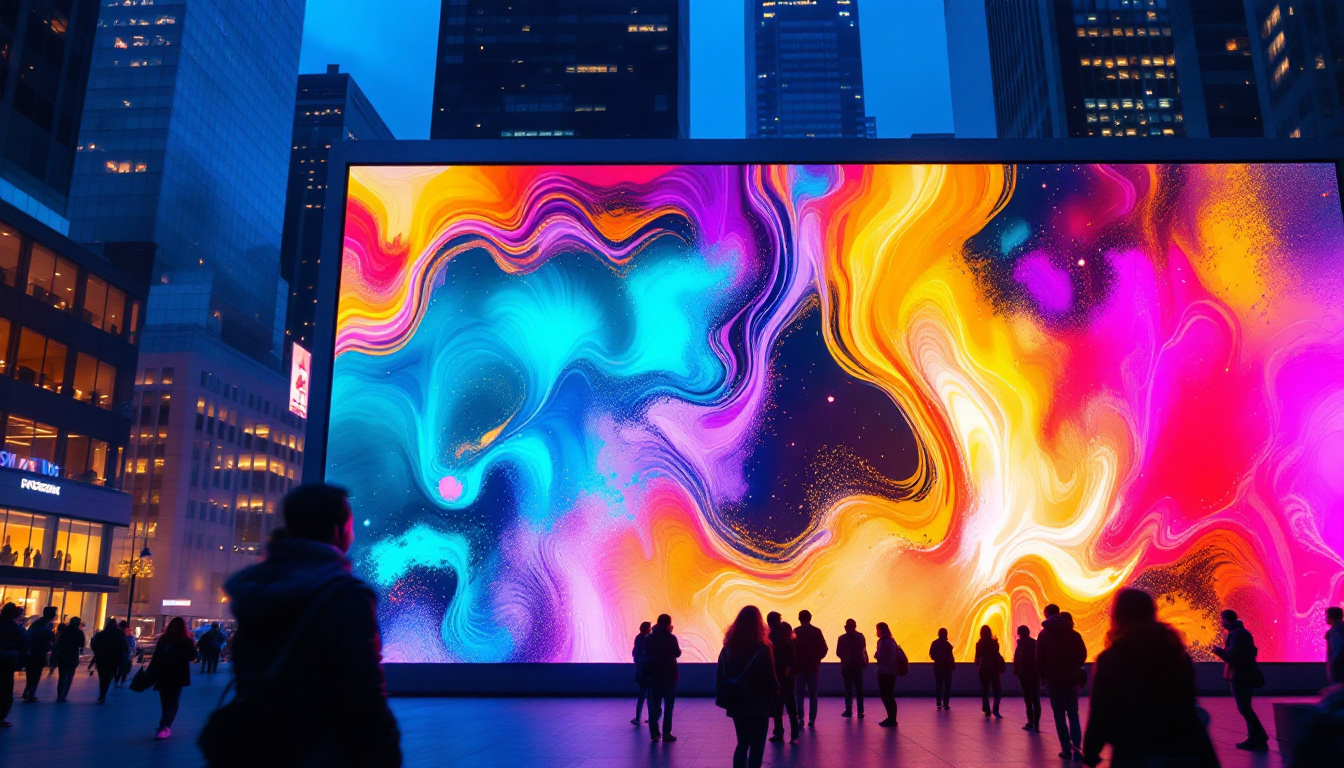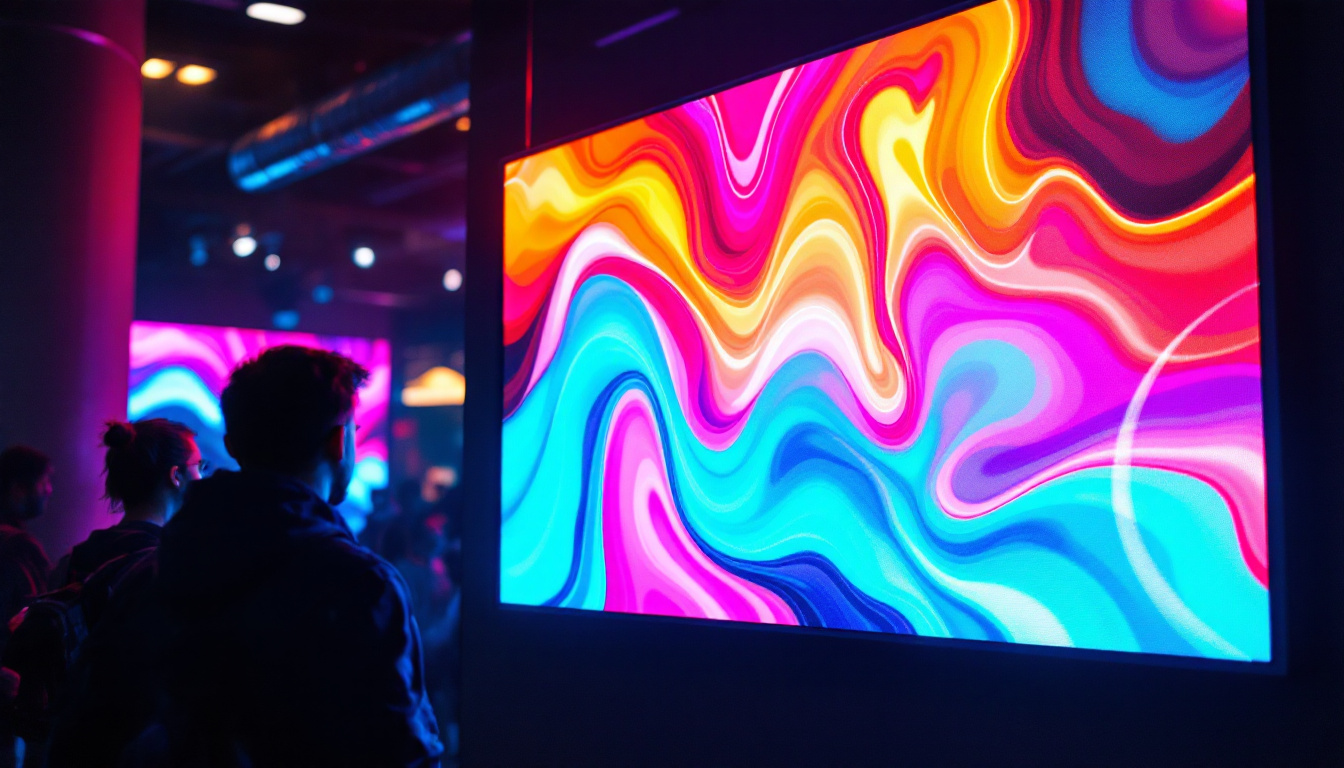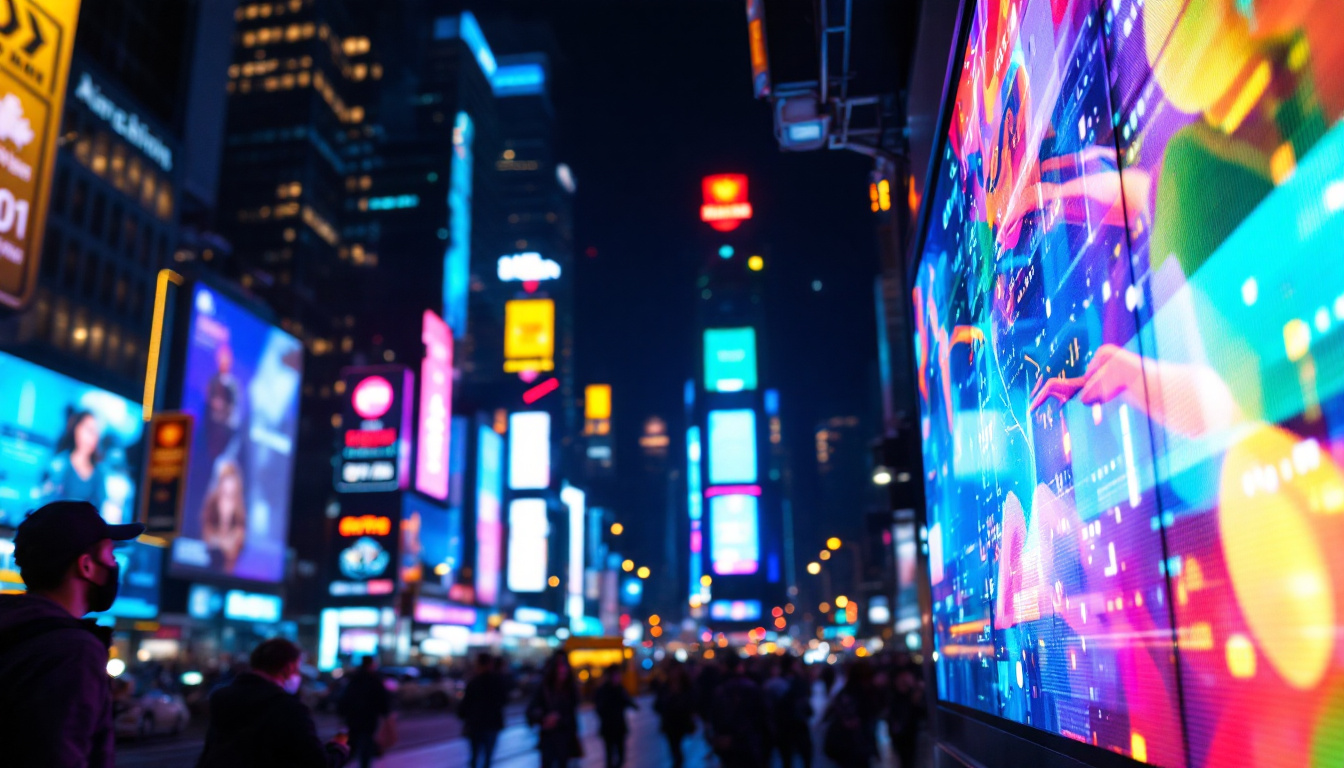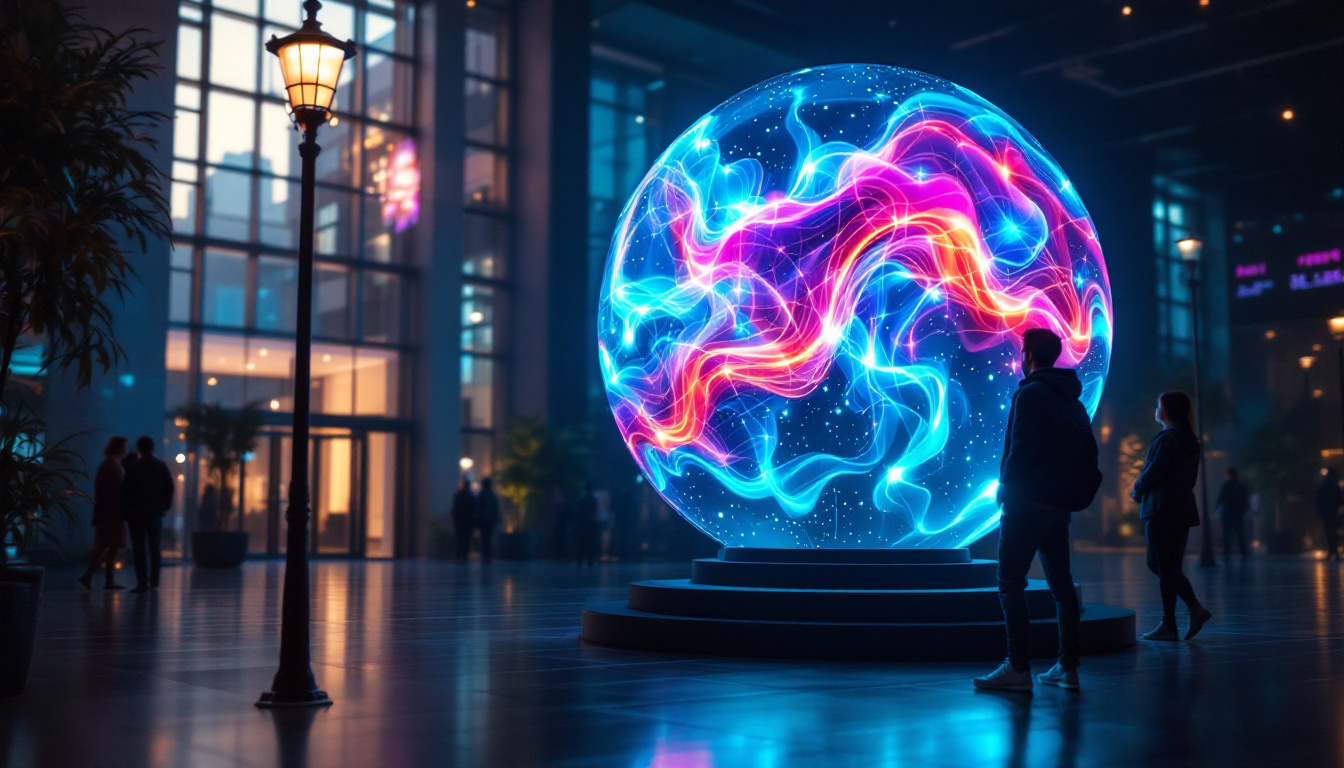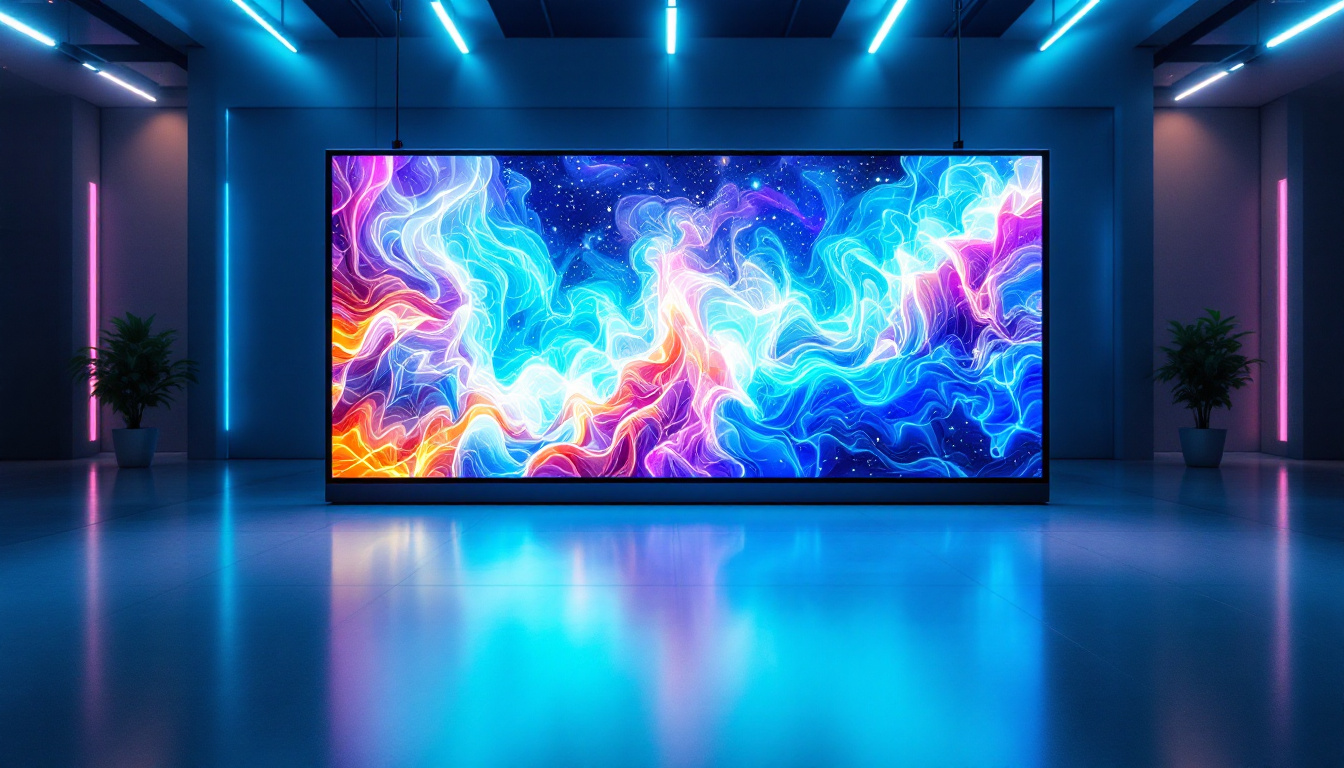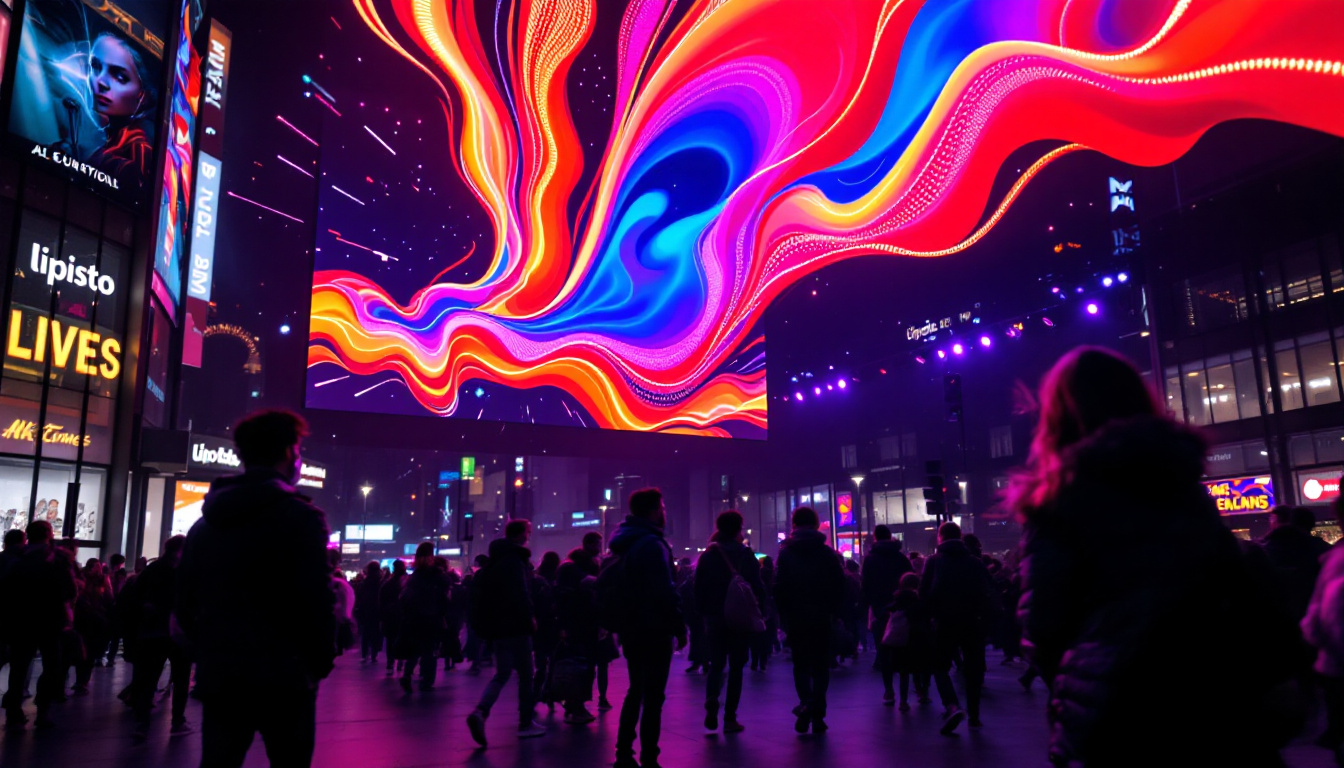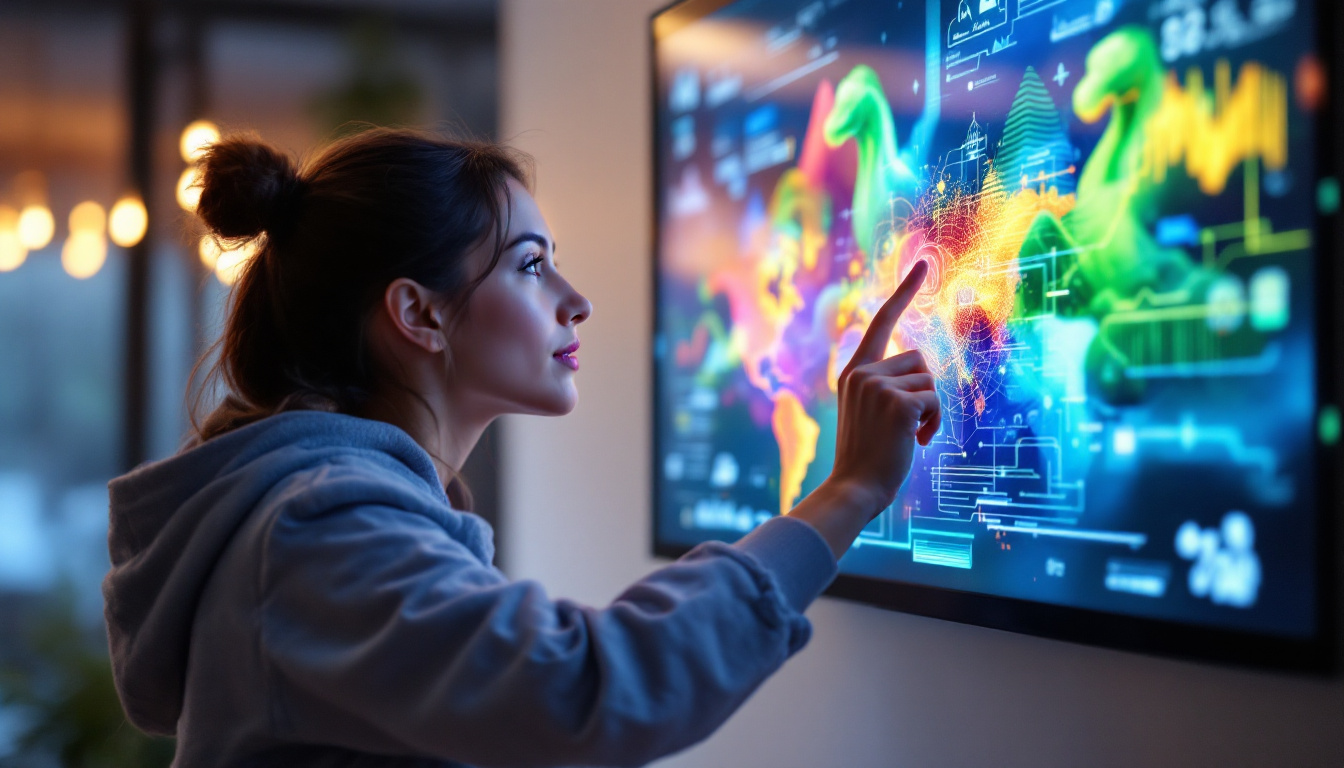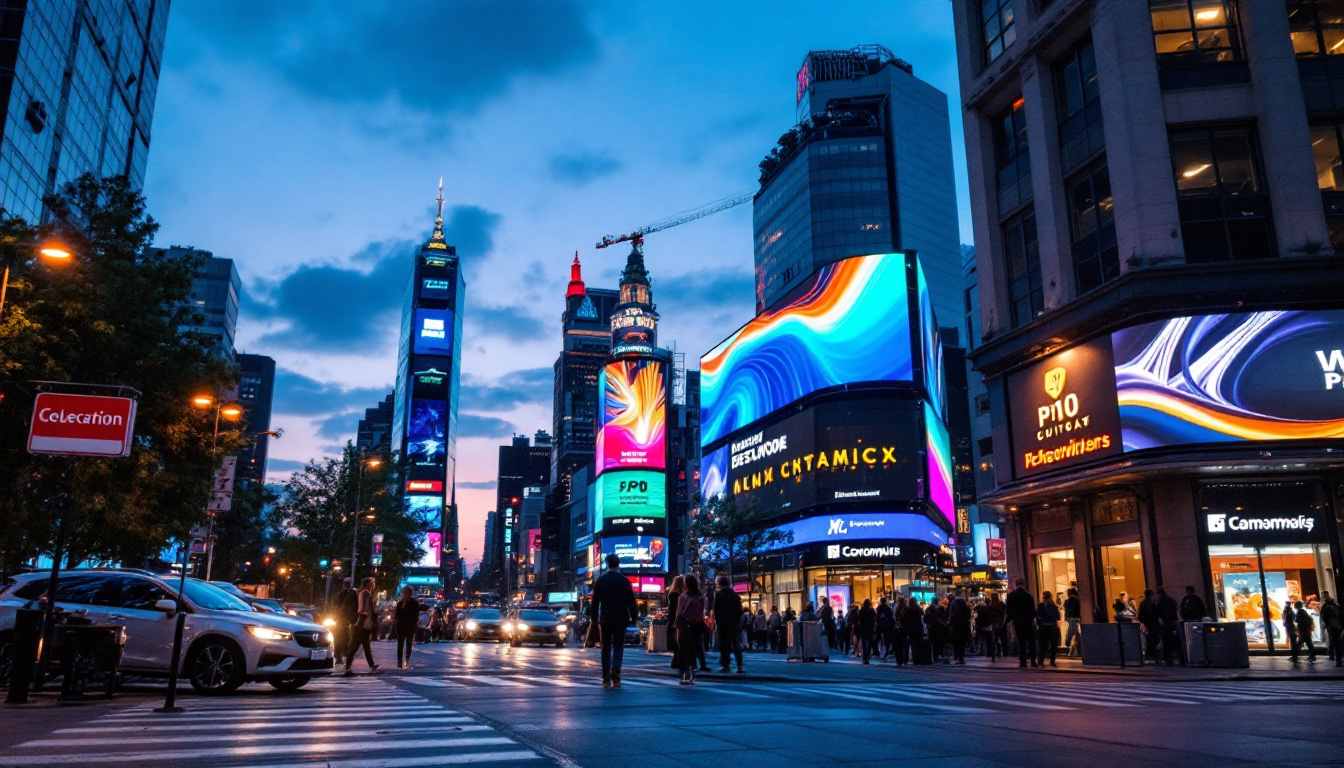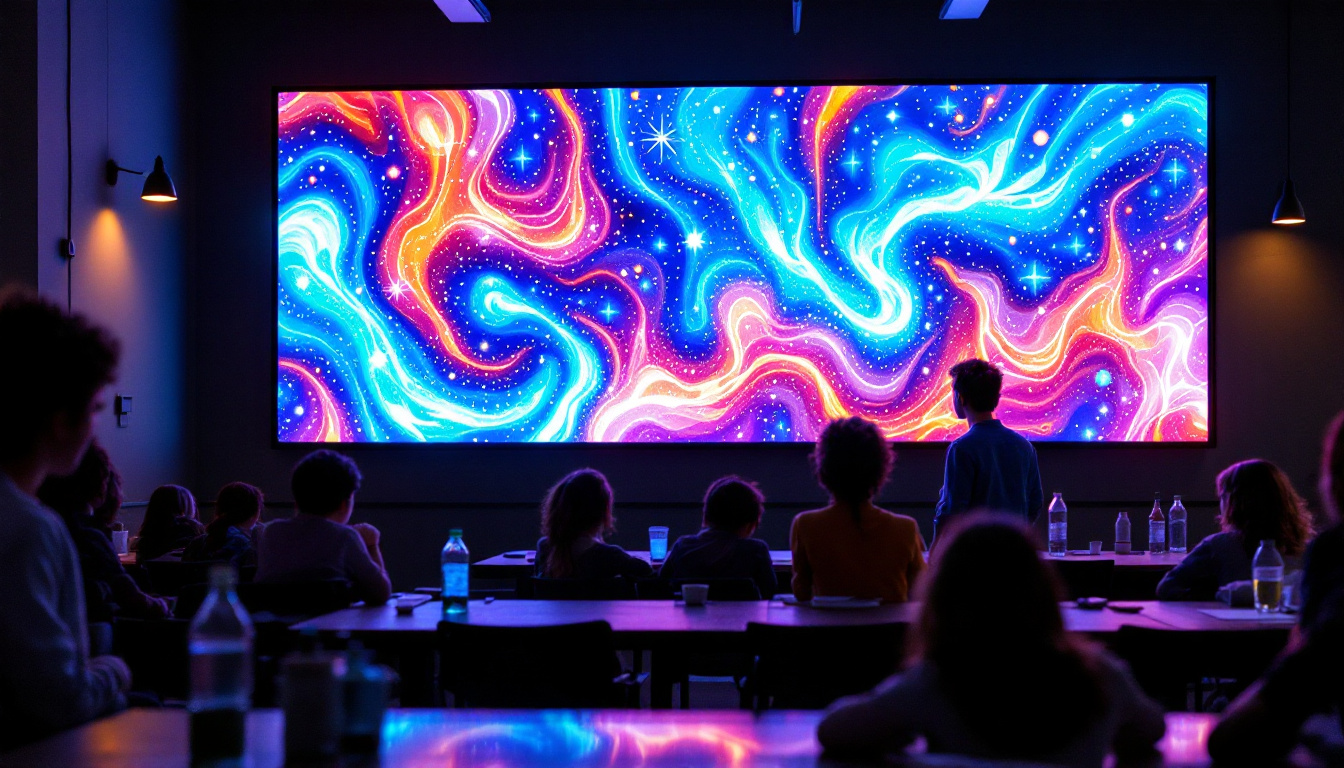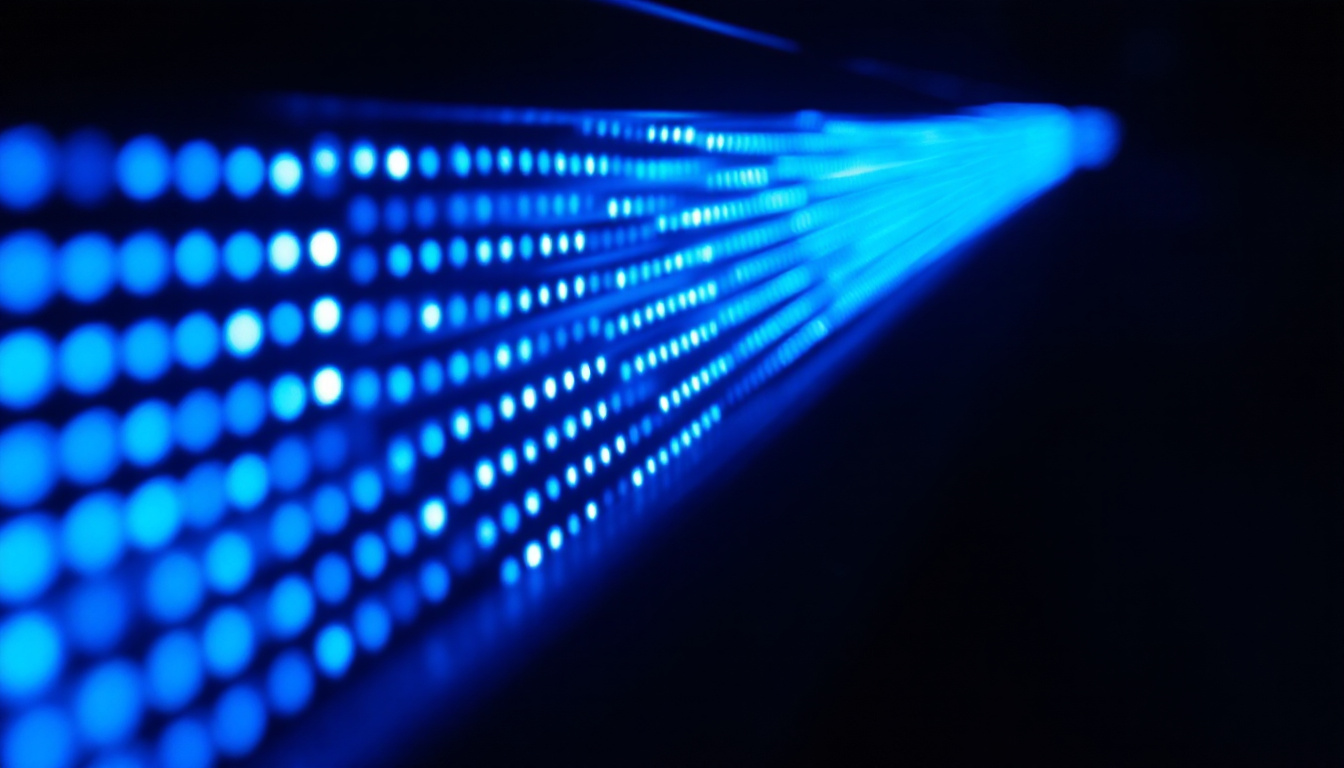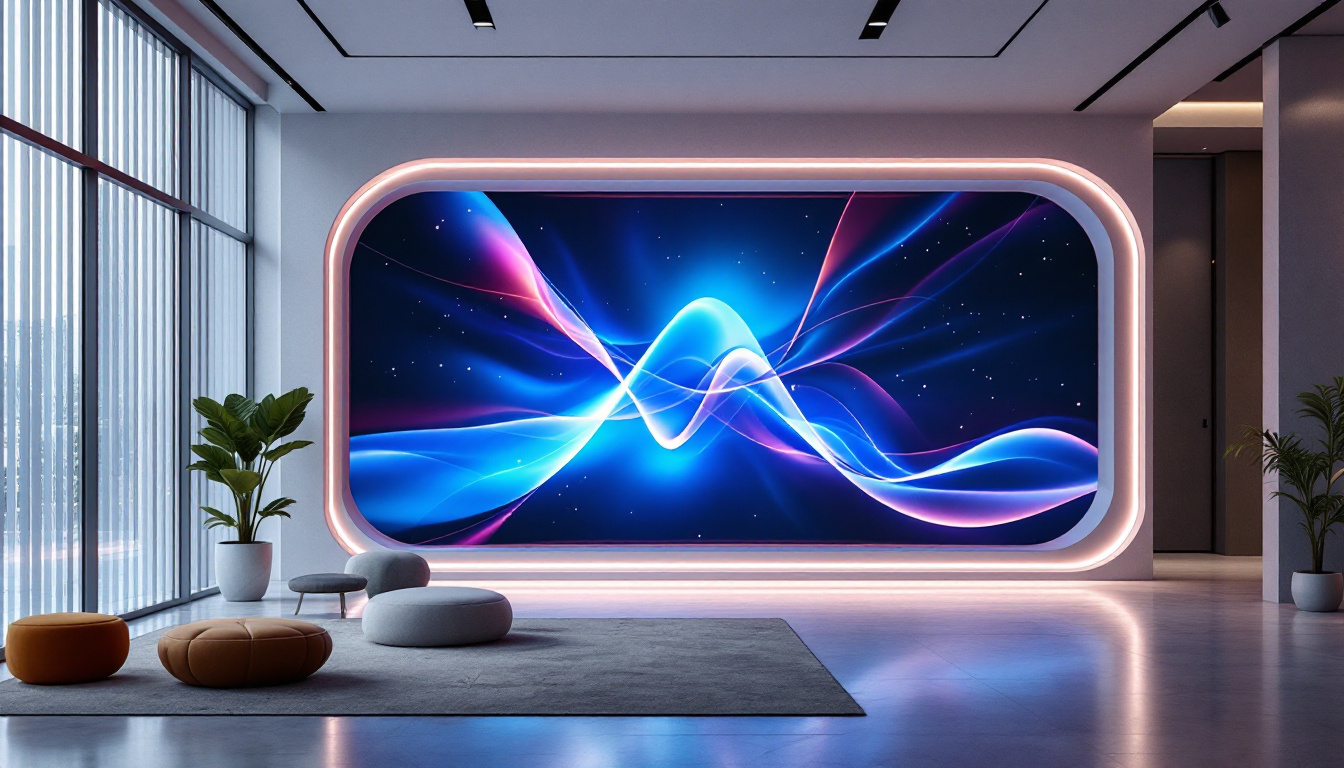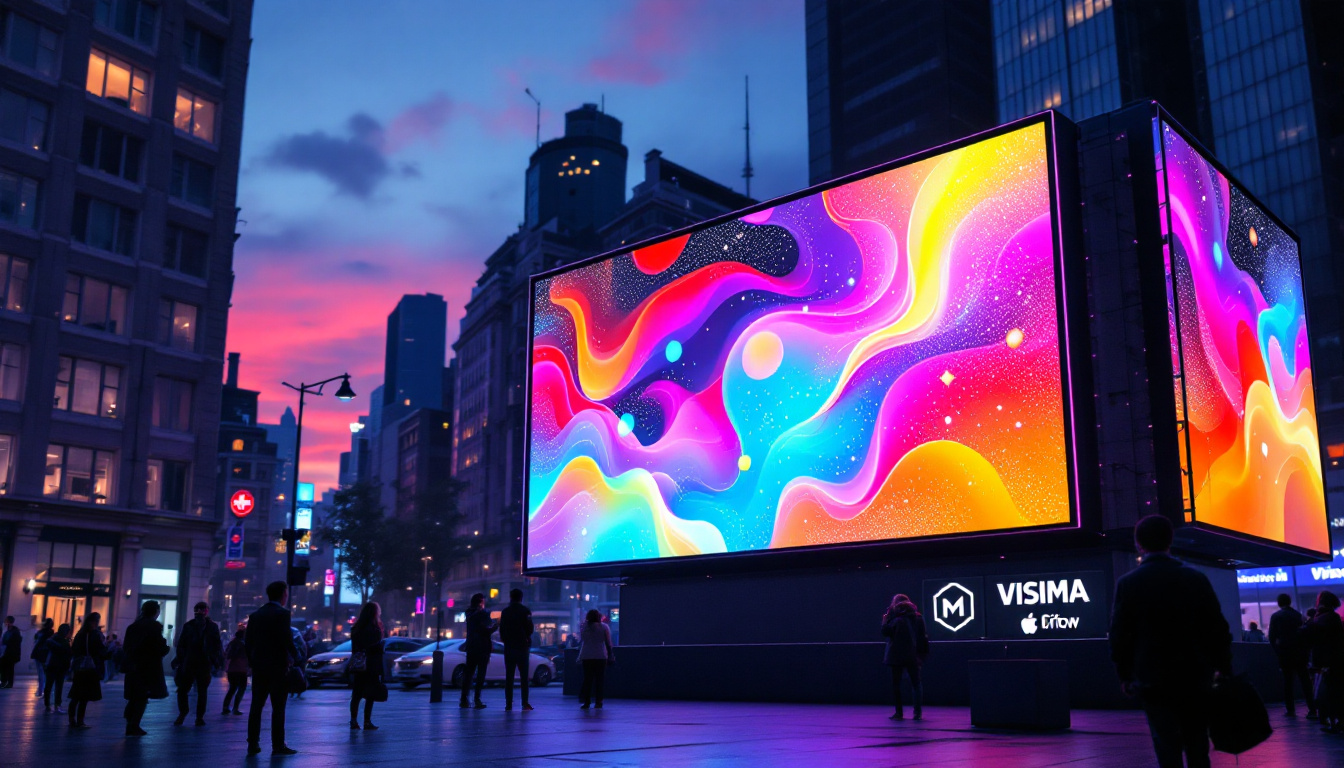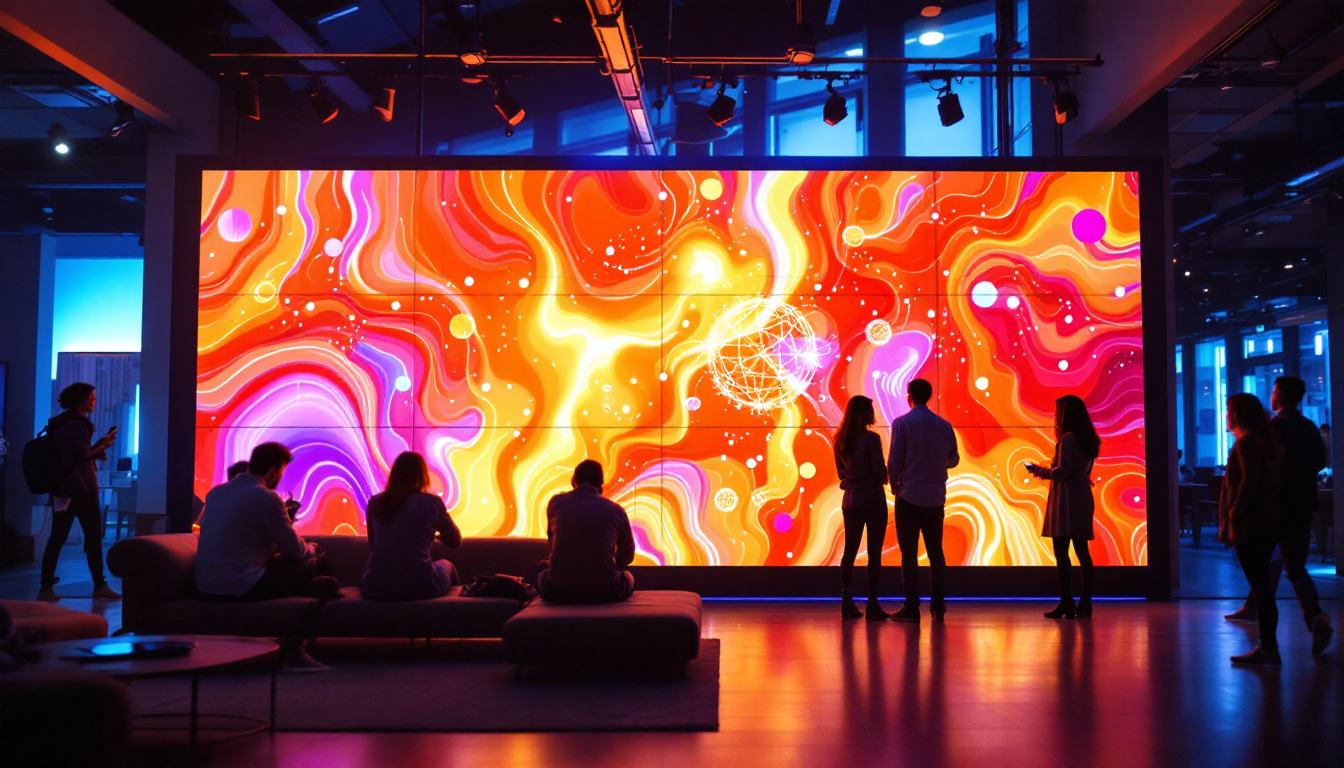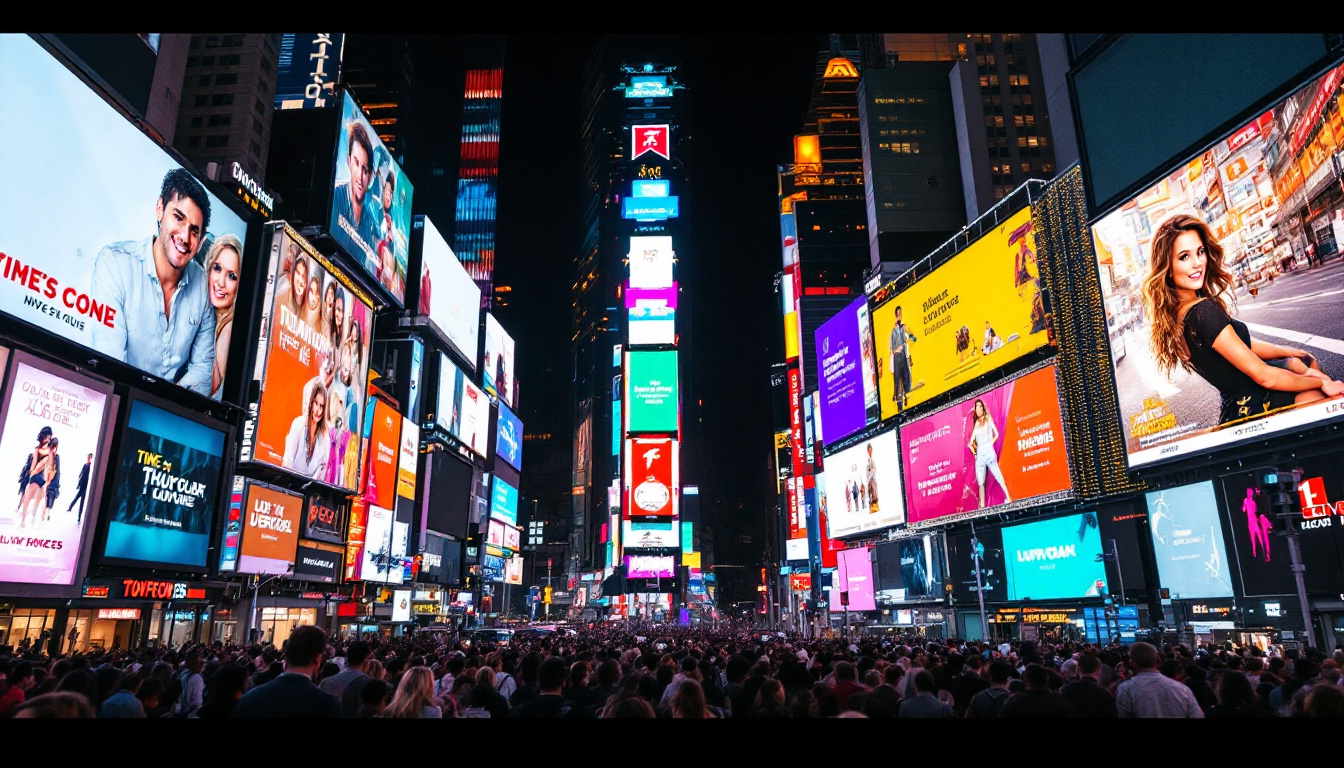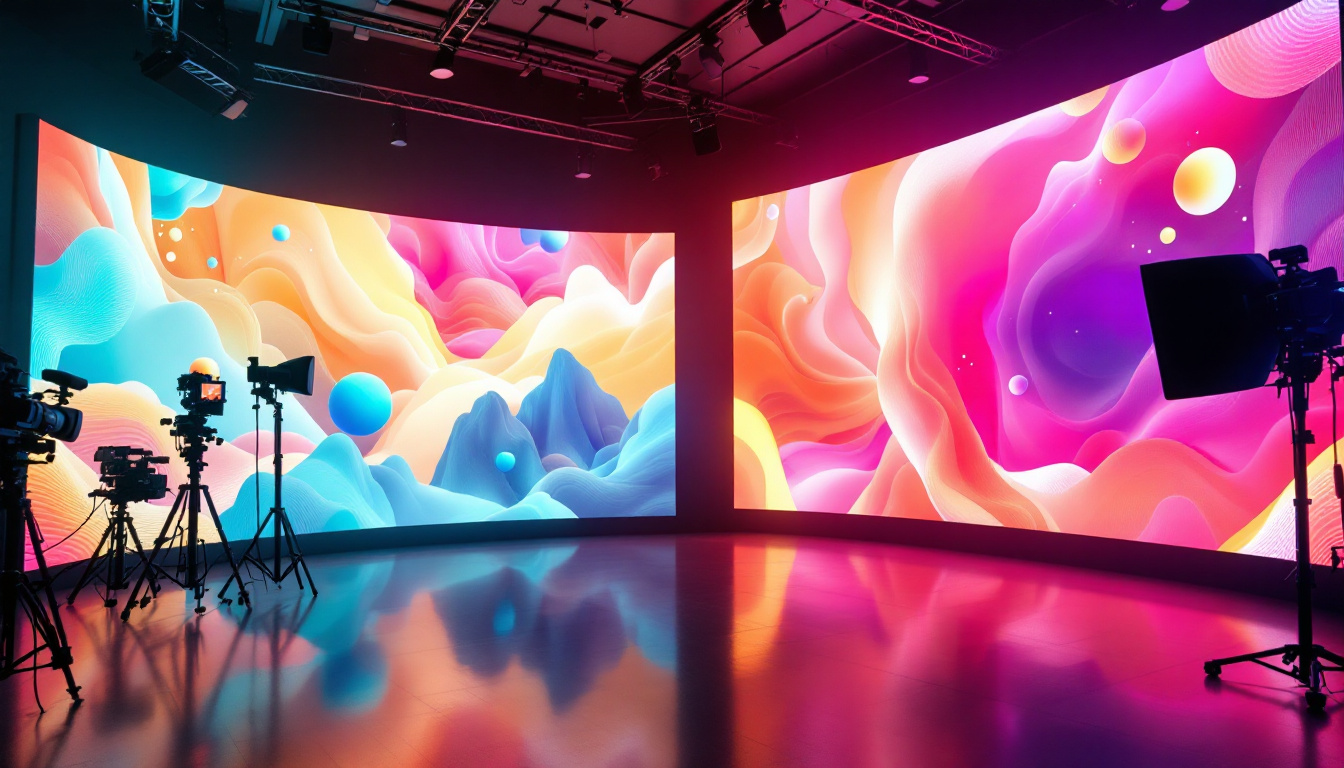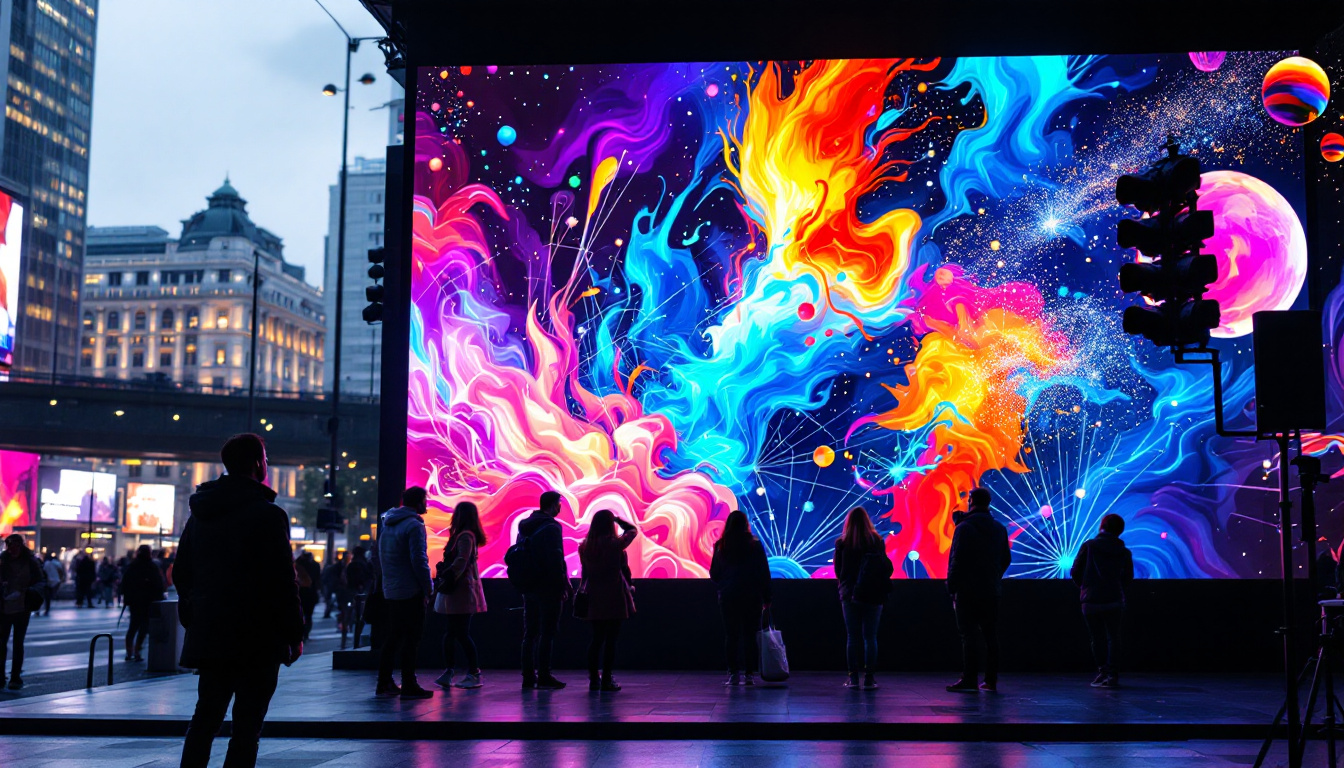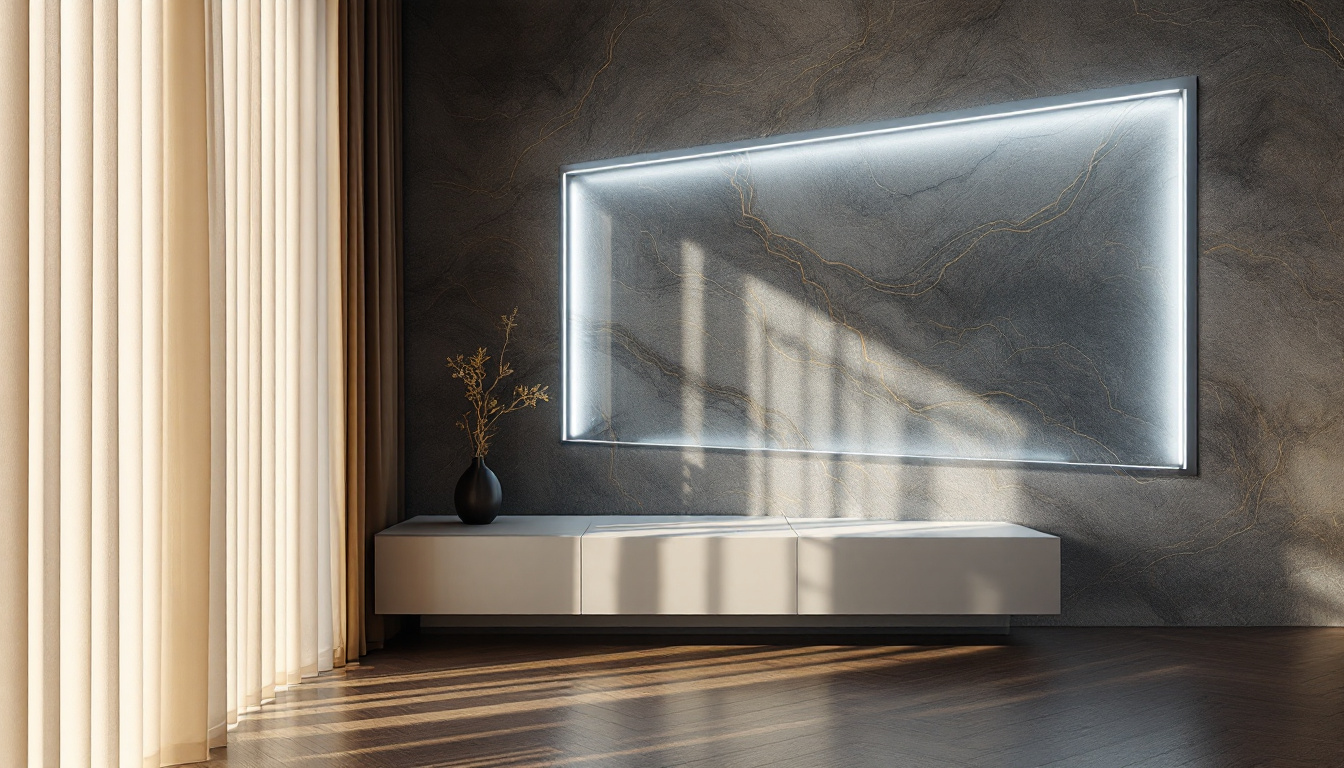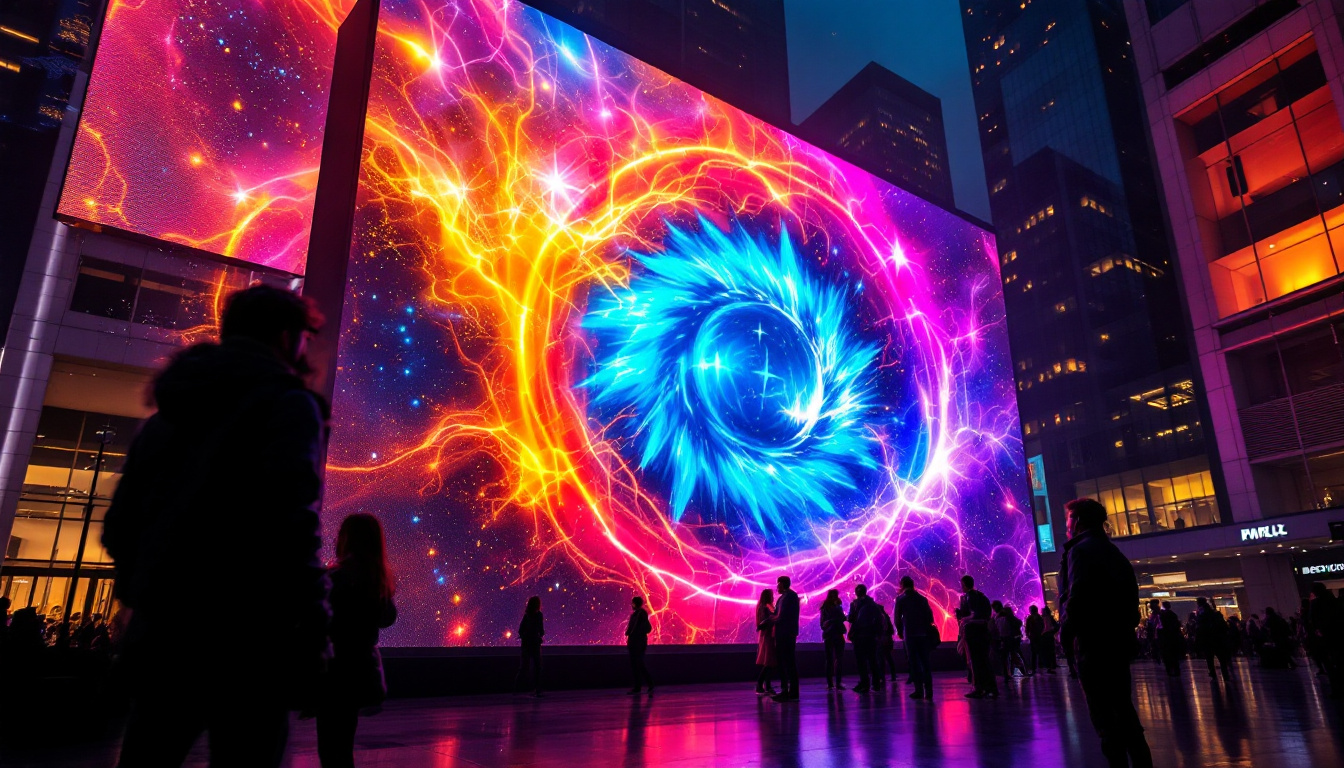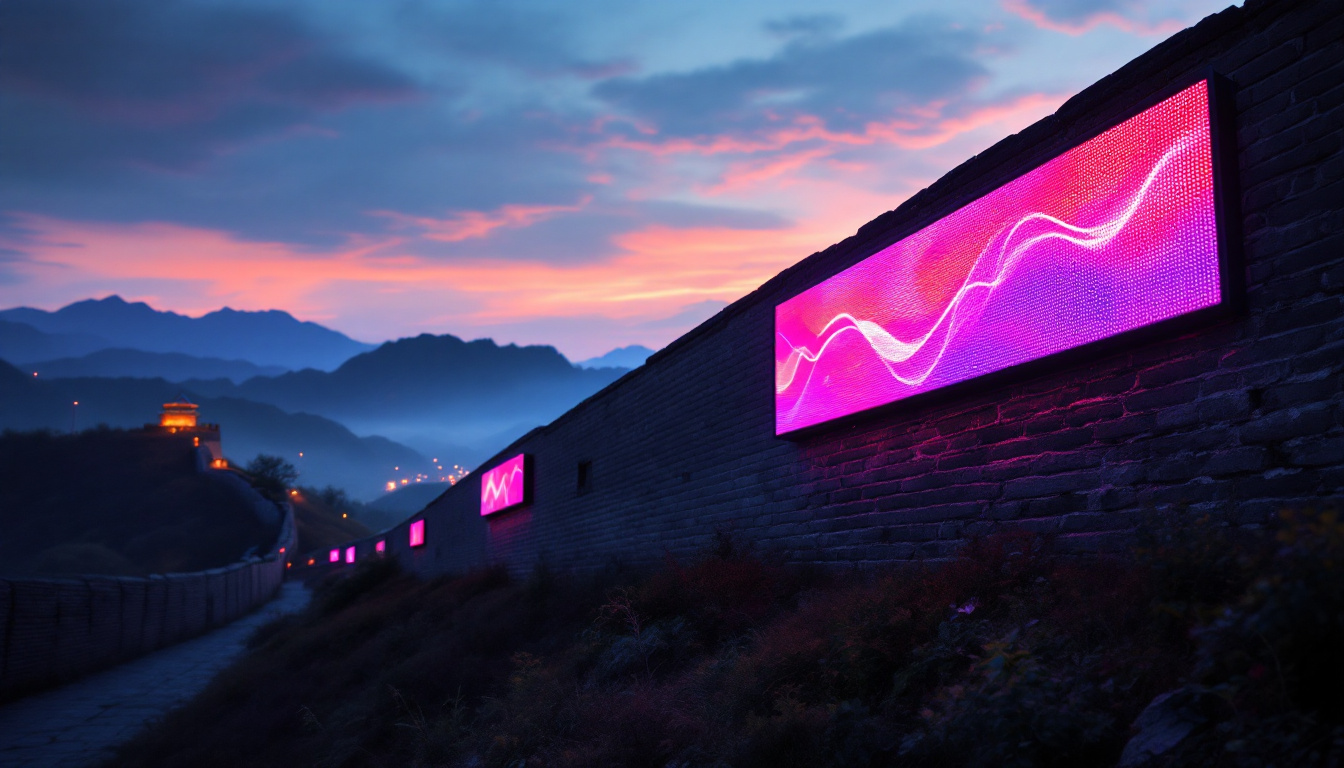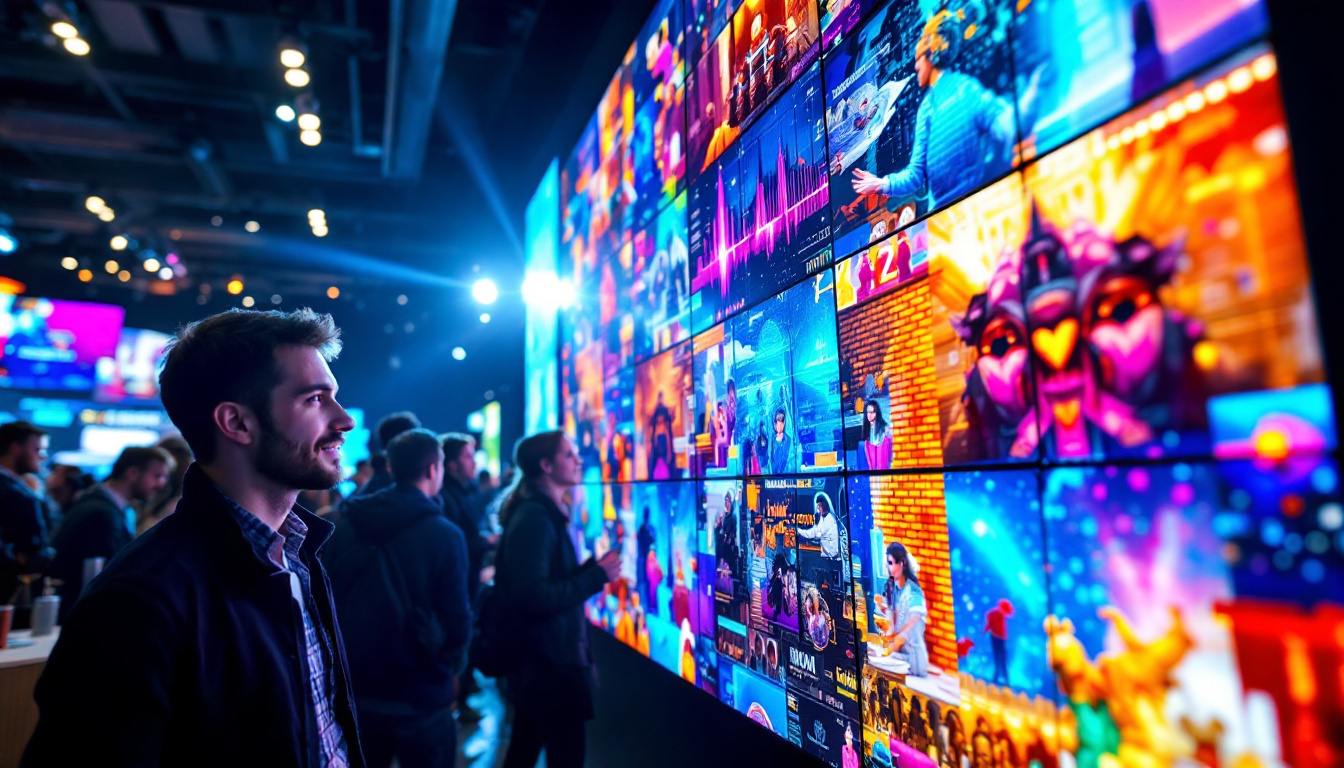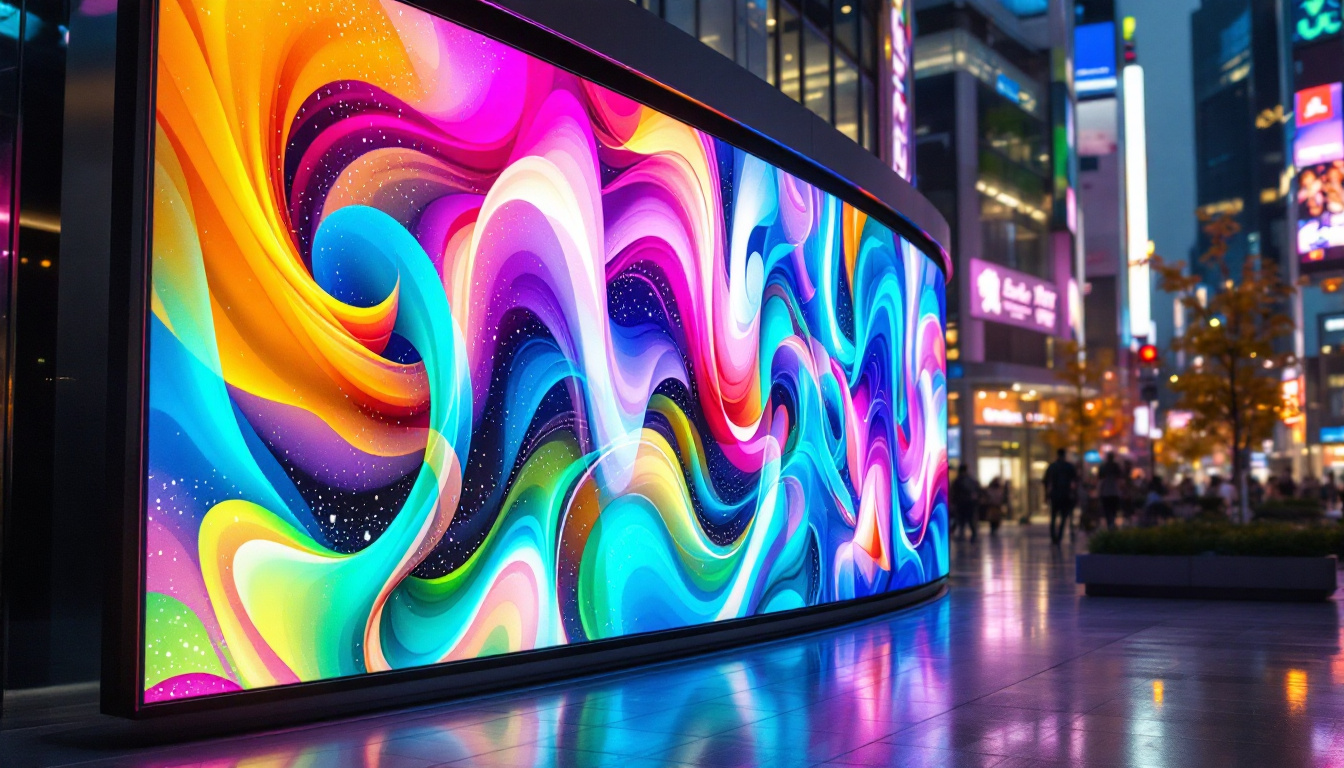In today’s fast-paced digital world, LED displays have become a cornerstone of visual communication. From advertising to information dissemination, these displays are everywhere, captivating audiences with their vibrant colors and dynamic content. This article delves into the intricacies of LED displays, exploring their technology, applications, and benefits, particularly in the context of the United States.
Understanding LED Technology
LED, or Light Emitting Diode, technology has revolutionized the way images and videos are displayed. Unlike traditional display technologies, LEDs use semiconductor materials to emit light when an electric current passes through them. This process not only enhances brightness but also improves energy efficiency. The longevity of LED lights is another significant advantage, often lasting tens of thousands of hours compared to conventional bulbs, which means less frequent replacements and reduced waste.
The Basics of LED Displays
At its core, an LED display consists of numerous individual LEDs arranged in a grid. Each LED can be controlled independently, allowing for the creation of complex images and animations. The combination of red, green, and blue LEDs produces a full spectrum of colors, enabling displays to present vibrant and eye-catching visuals. This capability has led to their widespread adoption in various fields, from advertising to art installations, where dynamic content can be showcased in real-time.
LED displays come in various types, including direct view and backlit displays. Direct view displays are made up of individual LED modules that form the entire screen, while backlit displays use LEDs to illuminate a liquid crystal display (LCD) panel. Both types have their unique advantages and are suited for different applications. For instance, direct view displays are often favored for their superior contrast ratios and viewing angles, making them ideal for large-scale events and exhibitions where visibility from multiple angles is essential.
Types of LED Displays
LED displays can be categorized into several types, each serving specific purposes. The most common types include:
- Indoor LED Displays: These displays are designed for indoor use, typically featuring higher pixel densities for closer viewing distances. They are commonly used in retail environments, conference rooms, and entertainment venues. The ability to display high-resolution content makes them particularly effective for engaging audiences and enhancing the overall experience.
- Outdoor LED Displays: Built to withstand harsh weather conditions, outdoor LED displays have lower pixel densities and are brighter to ensure visibility in direct sunlight. They are often used for billboards, sports arenas, and public information displays. The advancements in weatherproofing technology have allowed these displays to maintain performance and clarity, even in extreme conditions.
- Transparent LED Displays: These innovative displays allow light to pass through, making them ideal for storefronts and exhibitions where visibility is crucial. They offer a unique way to showcase products while maintaining an open feel. This transparency not only enhances aesthetic appeal but also allows for creative advertising solutions, blending digital content seamlessly with physical environments.
Additionally, there are specialized LED displays such as flexible LED screens, which can be bent and shaped to fit unconventional spaces, and high-definition LED displays that provide ultra-clear images for professional broadcasting and high-end installations. The versatility of LED technology continues to expand, pushing the boundaries of how we visualize information and art in our daily lives.
Applications of LED Displays
The versatility of LED displays makes them suitable for a wide range of applications across various industries. Their ability to deliver high-quality visuals in real-time has led to their adoption in numerous sectors.
Advertising and Marketing
One of the most prominent applications of LED displays is in advertising and marketing. Retailers and brands utilize large outdoor LED billboards to capture the attention of passersby. The dynamic nature of LED displays allows for rotating advertisements, promotions, and engaging content that can be updated easily.
Moreover, indoor LED displays are frequently used in shopping malls and airports to promote products and services, providing a visually appealing way to engage customers. The ability to display videos, animations, and interactive content enhances the overall shopping experience. This interactive capability is particularly advantageous in capturing the interest of younger consumers, who are increasingly drawn to visually stimulating environments. Retailers can also leverage data analytics to tailor their displays to specific demographics, ensuring that the content resonates with the audience in real-time.
Events and Entertainment
In the events and entertainment industry, LED displays play a crucial role in enhancing audience engagement. Concerts, sports events, and festivals often feature large LED screens that display live feeds, graphics, and animations, creating an immersive experience for attendees.
Furthermore, event organizers can use LED displays for stage backdrops, providing a versatile canvas that can change throughout the performance. This adaptability allows for creative storytelling and enhances the overall production value. For instance, during a concert, LED screens can seamlessly transition from vibrant visuals that match the beat of the music to more subdued imagery during quieter moments, helping to evoke emotions and deepen the audience’s connection to the performance. Additionally, the integration of augmented reality (AR) with LED displays is becoming more prevalent, offering audiences a unique blend of digital and physical experiences that can transform traditional events into unforgettable spectacles.
Information Dissemination
LED displays are also widely used for information dissemination in various public spaces. Transportation hubs like airports and train stations utilize LED screens to provide real-time updates on schedules, delays, and other important information. This not only keeps travelers informed but also enhances operational efficiency.
Additionally, educational institutions have adopted LED displays for announcements, schedules, and event promotions, creating a modern and engaging way to communicate with students and staff. These displays can serve as interactive boards, allowing students to access information about campus events, emergency alerts, and even live feeds from lectures or seminars. The integration of LED technology into educational settings not only modernizes communication but also fosters a sense of community by keeping everyone informed and engaged. Furthermore, as schools and universities move towards more digital solutions, LED displays can be easily integrated with mobile apps and online platforms, providing a cohesive communication strategy that meets the needs of today’s tech-savvy students.
Benefits of LED Displays
LED displays offer numerous advantages over traditional display technologies, contributing to their growing popularity across various sectors. These benefits include energy efficiency, durability, and superior image quality.
Energy Efficiency
One of the standout features of LED technology is its energy efficiency. LED displays consume significantly less power compared to traditional LCD or plasma displays, making them an environmentally friendly option. This not only reduces operational costs but also minimizes the carbon footprint associated with energy consumption.
Moreover, many LED displays come with features like automatic brightness adjustment, which optimizes energy usage based on ambient light conditions. This smart technology further enhances energy savings, making LED displays a sustainable choice for businesses.
Durability and Longevity
LED displays are known for their durability and long lifespan. Unlike traditional displays that may suffer from burn-in or require frequent replacements, LED technology is built to last. Most LED displays have a lifespan of over 100,000 hours, ensuring that they can operate for years without significant degradation in performance.
This longevity also translates to lower maintenance costs, as businesses do not need to invest in frequent repairs or replacements. The robust construction of outdoor LED displays, designed to withstand harsh weather conditions, further enhances their reliability.
Superior Image Quality
When it comes to image quality, LED displays excel in delivering vibrant colors and high contrast ratios. The ability to produce deep blacks and bright whites ensures that content is visually striking, even in challenging lighting conditions. This is particularly important for outdoor displays, where sunlight can wash out images on traditional screens.
Additionally, the high refresh rates of LED displays contribute to smooth motion rendering, making them ideal for video playback. Whether displaying advertisements or live events, the clarity and quality of LED displays captivate audiences and enhance engagement.
The Future of LED Displays
The future of LED displays looks promising, with ongoing advancements in technology and design. As industries continue to seek innovative ways to engage audiences, LED displays will play a pivotal role in shaping visual communication.
Emerging Technologies
Emerging technologies such as microLED and OLED are set to take LED displays to the next level. MicroLED technology offers even smaller pixels, resulting in higher resolutions and improved image quality. This advancement opens up new possibilities for applications in virtual reality and augmented reality.
Additionally, OLED technology, known for its ability to produce true blacks and vibrant colors, is gaining traction in the display market. As these technologies evolve, consumers can expect more immersive and visually stunning experiences across various platforms.
Integration with Smart Technologies
The integration of LED displays with smart technologies is another trend shaping the future. With the rise of the Internet of Things (IoT), LED displays can become part of a connected ecosystem, allowing for real-time data sharing and interactive experiences.
For instance, smart LED displays can adapt content based on audience demographics or preferences, creating personalized experiences. This level of interactivity not only enhances engagement but also provides valuable insights for businesses looking to optimize their marketing strategies.
Sustainability Initiatives
As sustainability becomes a priority for businesses and consumers alike, the LED display industry is also focusing on eco-friendly practices. Many manufacturers are exploring ways to reduce the environmental impact of production and disposal processes.
Recycling programs for old LED displays and the use of sustainable materials in manufacturing are becoming more common. These initiatives not only benefit the environment but also resonate with consumers who prioritize sustainability in their purchasing decisions.
Conclusion
LED displays have transformed the landscape of visual communication, offering unparalleled advantages in terms of energy efficiency, durability, and image quality. Their applications span a wide range of industries, from advertising and entertainment to information dissemination.
As technology continues to evolve, the future of LED displays looks bright, with emerging technologies and smart integrations paving the way for even more innovative applications. Embracing these advancements will not only enhance audience engagement but also contribute to a more sustainable and connected world.
In the United States, the demand for LED displays is expected to grow, driven by the need for effective communication and marketing strategies. Businesses that leverage LED technology will undoubtedly gain a competitive edge in an increasingly digital marketplace.
Discover LumenMatrix LED Display Solutions
As you consider the future of visual communication and the role LED displays play in it, we invite you to explore the innovative solutions offered by LumenMatrix. With a commitment to revolutionizing the industry, LumenMatrix provides a comprehensive range of LED display modules, from Indoor and Outdoor LED Wall Displays to specialized options like Vehicle, Sports, and Floor LED Displays. Whether you’re looking to enhance brand visibility, create immersive environments, or deliver messages with precision and flair, LumenMatrix has the technology to bring your vision to life. Check out LumenMatrix LED Display Solutions and join the forefront of digital signage excellence.

